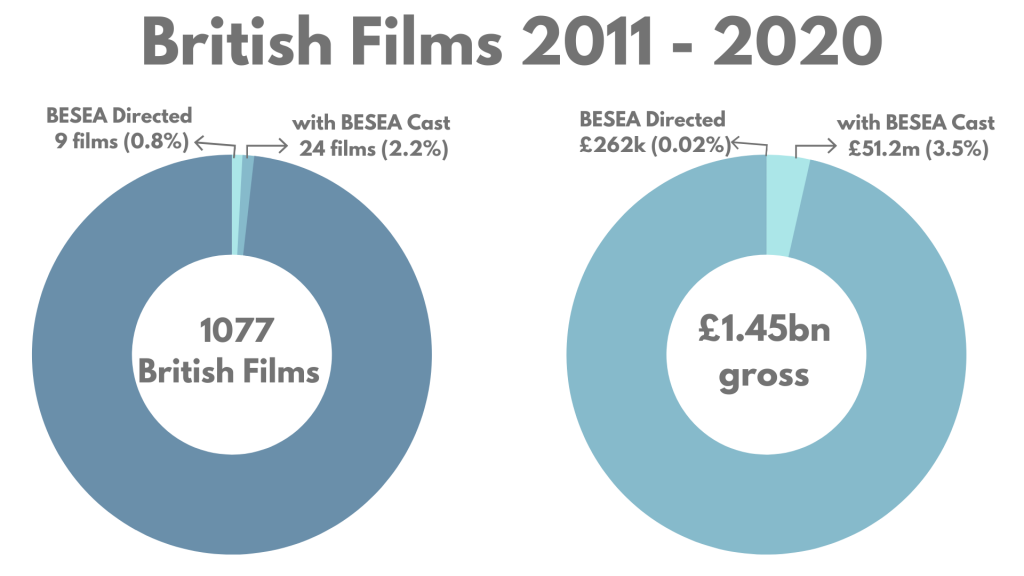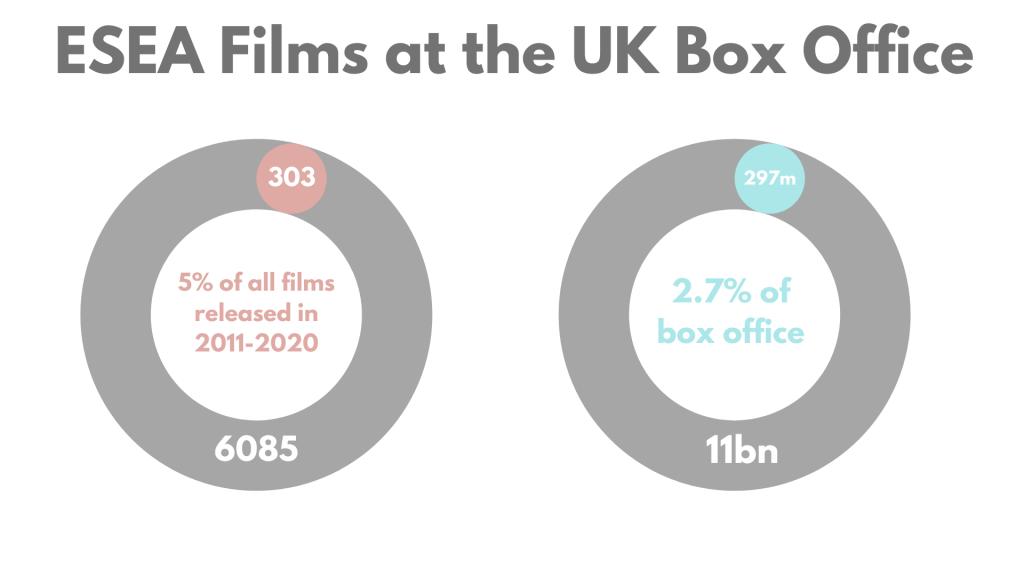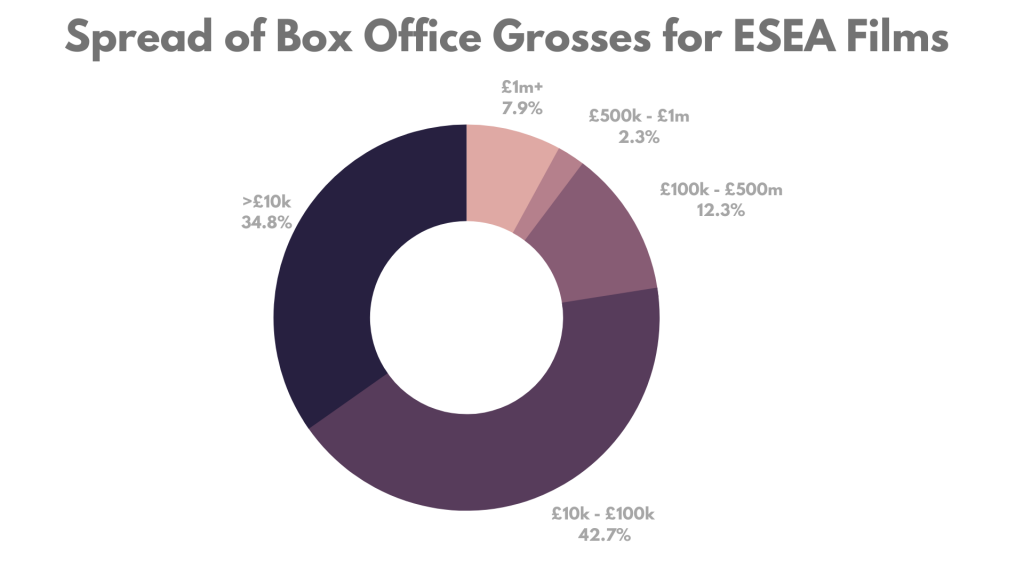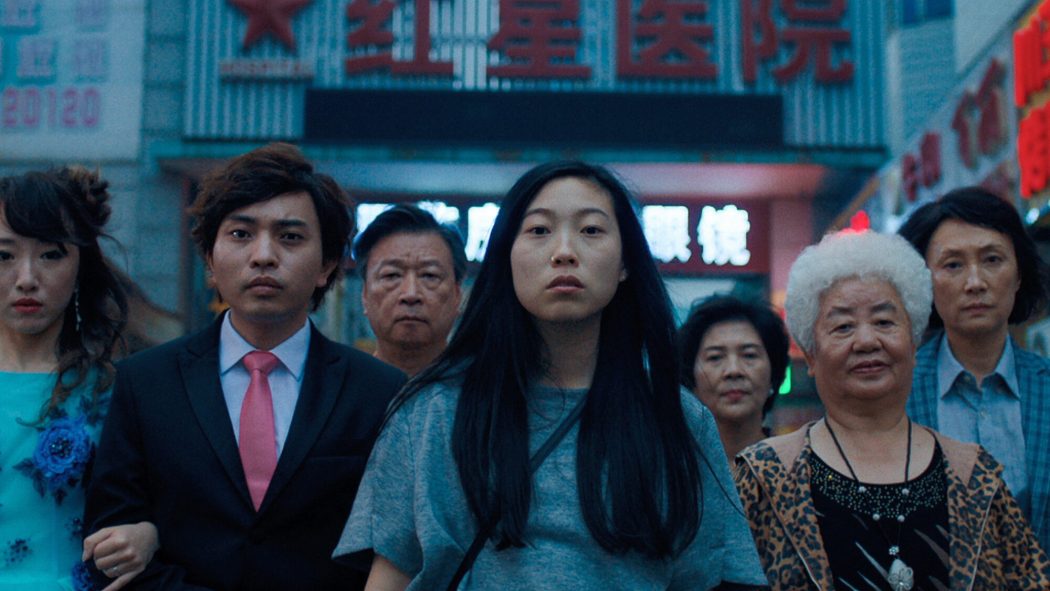Vicki Brown (Co-Founder of MilkTea Films) and Delphine Lievens (Senior Box Office Analyst at Gower Street Analytics) examine the history of East and Southeast Asian titles in the UK as well as ideas on how exhibitors can better cultivate British East and Southeast Asian audiences.
While audiences have spent the last few months embracing Squid Game and Shang-Chi and the Ten Rings, the prominence of these titles cloak the real poverty on screen when it comes to East and Southeast Asian (ESEA) representation. Not only is it rare to see a film with ESEAs on screen or behind the camera, but this community has also been severely affected by decades of exclusionary practices, whitewashing and typecasting. It may have been a joke, but when Scarlett Johansson was offered up as Gemma Chan’s response to who would play her in a movie, it rang true to many in the ESEA community.
There is a diverse and vibrant British East and Southeast Asian (BESEA) audience here in the UK, that are keen to see themselves on the big screen and support ESEA titles. However, not only are there a lack of viewing options but these audiences aren’t being cultivated in any meaningful way.
The first issue to tackle is that of film availability and reach. ESEA titles can often be pigeonholed as niche but an alignment of a thoughtful marketing campaign, as well as availability to screen, can produce results. Alongside the impressive critical and financial success of Parasite, the past few years have seen a variety of ESEA-led films achieving success at the UK box office. Most recently, Marvel’s Shang-Chi and the Ten Rings became the second biggest opener of 2021 in the UK (behind No Time To Die) and is on track for a total box office haul in excess of £20m. Earlier in 2021, surprise Japanese anime hit Demon Slayer: Mugen Train was the second anime title to cross the £1m box office mark in recent years. Critical successes can also be found among the likes of indie titles such as The Farewell (£930k) and Minari (grossed an impressive £248k in its post-pandemic cinema release, despite already being available online).
These results alone demonstrate the value of ESEA talent both on and off-screen. However, when we delve into the data around ESEA representation on UK cinema screens, there is still a long way to go, and in particular, BESEA talent in the UK are under-represented on a massive scale.

Of the 1077 British Films released in the past 10 years (2011-2020), only 9 have been helmed by a BESEA director, which equates to 0.8%. However, the box office for these films represents just 0.02% of all gross. These films often do not have particularly impressive box office results, most likely due to a lack of ambition and P&A spend from the distributors that release them.
Films featuring BESEA actors amongst their cast fared a little better, with a wider variety of films and box office results, although it is worth noting that of the 24 films shown in the graph above, only 5 featured a BESEA actor in a leading role.

Examining ESEA films within the broader context of all films released in the UK produces similar results. 5% of films released in the past 10 years were helmed by an ESEA director (either produced in their home country or as diaspora in another territory such as the US). Again, the box office results are limited, with 5% of films responsible for just 2.7% of box office grossed.

The spread of box office grosses for these films again shows a lack of ambition from distributors when releasing films led by ESEA talent, or specific to ESEA culture. Additionally, of the 7.9% of ESEA releases that grossed £1m+, the majority are Hollywood blockbuster titles made by diaspora directors, often with no reference to the lived experience of ESEA audiences. Again, this shows that in the development, production and acquisitions stages of the film value chain, there is an incorrect perception that ESEA stories do not have an audience.
A lack of on-screen representation can have a detrimental effect on audiences, and yet time and time again ESEA and other audiences in the UK turn out to see these (often under-supported) films. There is a clear cultural and commercial advantage to bringing more ESEA content to our screens and nurturing and developing our BESEA talent in the UK to ensure they have a better contribution to the British cinema canon in the decade ahead.
The second issue to tackle is the cultivation of more diverse audiences and how venues can do more when it comes to the programming of ESEA titles. Clearly, the box office data above paints a depressing picture, but it is not all doom and gloom.
At MilkTea, an organisation that seeks to shine a spotlight on ESEA voices in film, we have had a great number of successes in programming both classic and new ESEA titles. Here are some points we feel are worth considering when looking to cultivate with this and more diverse audiences:
How ESEA Friendly is the Title?
Don’t assume that a single ESEA cast member will rally the troops to lend their support. Ask how authentic is the portrayal of the character? Is the role exoticised in any way? Who are the creatives behind the scenes?
Hire ESEA and POC Programmers
Seek advice and collaborate with ESEA and POC programmers. If venues are serious about their desire to be more inclusive, these programmers should be empowered to screen titles they feel have value and not be treated as a tokenistic venture. These programmers will be able to bring in a more nuanced viewpoint and encourage audiences to think about these titles in different and often more engaging ways. Be mindful that one person does not speak for the whole community and should not be made to feel like a spokesperson. It’s also vital to pay them for their time and expertise.
Work with ESEA Organisations and Community Groups
Alongside MilkTea, there are numerous organisations that can speak directly to the ESEA community. Speak to them about what their audiences want to see. They could have ideas about films that never secured a theatrical release or perhaps even failed to reach these shores altogether. They will also be better placed to advise on marketing strategies to reach ESEA audiences.
Pricing
Be mindful that the cost of a cinema ticket can be a barrier to entry. Look at the range of ticket prices on offer to see if it can allow for greater flexibility. In some of our previous screening events, we partnered with a sponsor to allow us to reduce the cost of each ticket or provide a 2-4-1 offer.
The Importance of the Experience
At MilkTea, we know the value that a cinematic experience can bring, but we also want to ensure that we are creating a safe space for our audience. The often-damaging history of East and Southeast Asians on screen has understandably left many frustrated to say the least. We want to ensure that not only can this audience see more authentic and well-rounded portrayals of ESEA characters on screen, but that people that look like them are filling the seats around them. In addition, we also seek ways to give our events that extra added value. Whether it’s a panel discussion, a quiz or recreating that movie premiere experience, we want these events to stay with our audiences long after the credits have rolled.
There is still a way to go, but by ensuring the support of a diverse range of films and concerted efforts to be more inclusive with audiences, the UK exhibition landscape will not only thrive but endure.
If you want to find out more about the work of MilkTea Films, find us at https://www.milkteafilms.com. Our Twitter handle is @wearemilktea.





